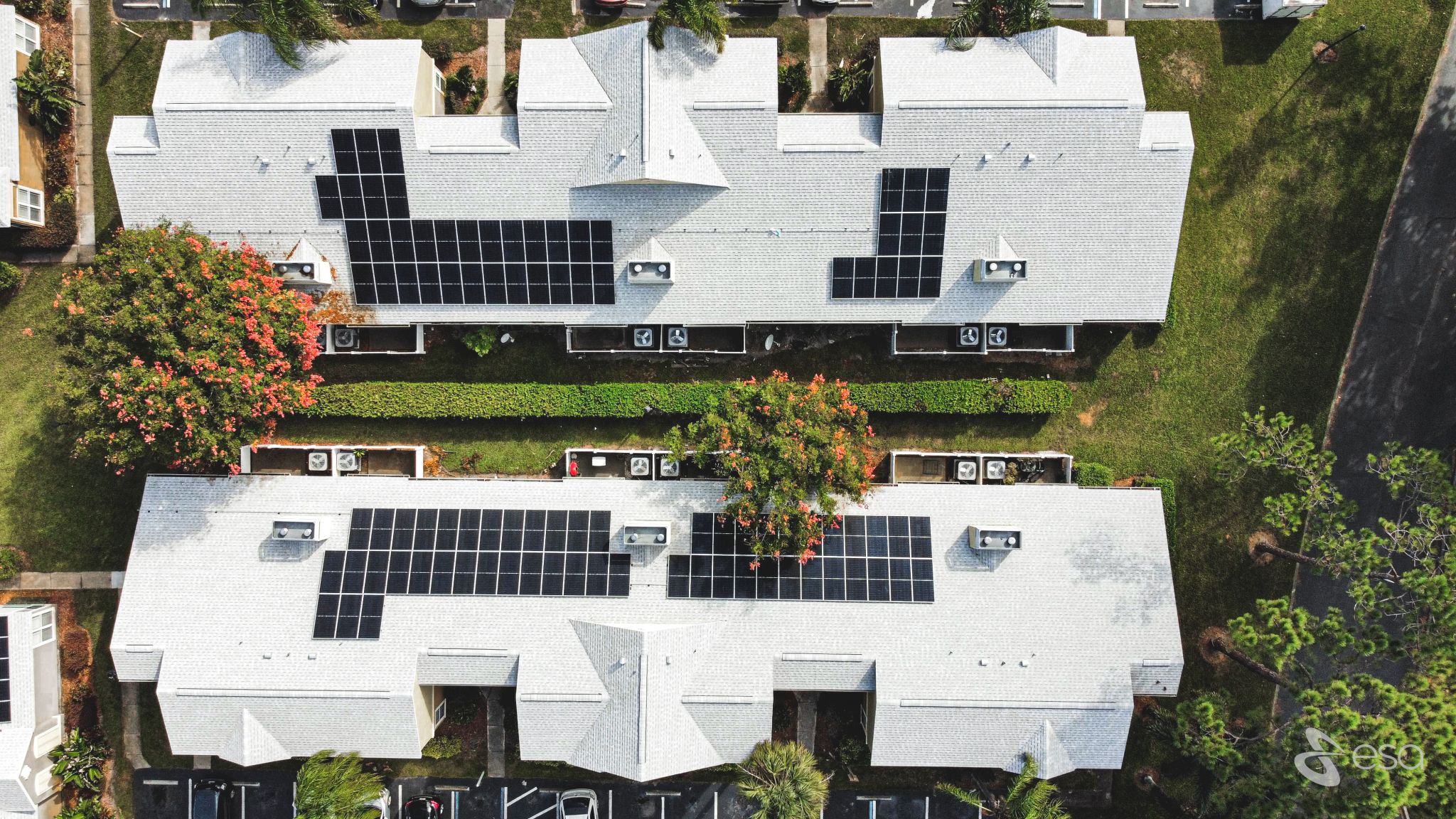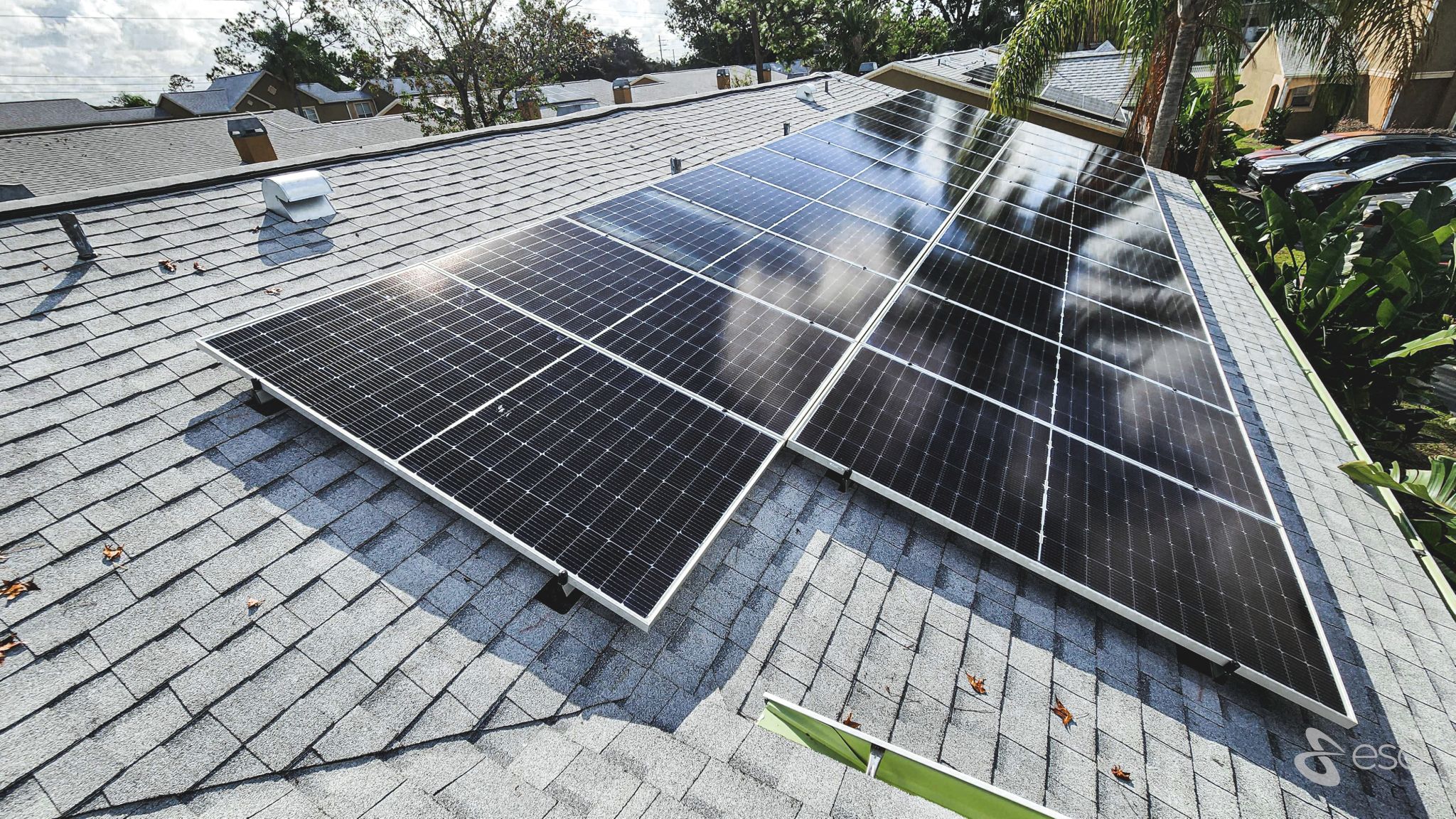How to Increase the NOI of Multifamily Assets with Solar
 By
Mel Bergsneider-Serrano
·
3 minute read
By
Mel Bergsneider-Serrano
·
3 minute read
Solar power is revolutionizing the multifamily housing industry, not only by providing sustainable energy solutions but also by boosting the net operating income (NOI) of these assets.
This blog post explores the positive impact of solar power on multifamily asset NOI, highlighting the environmental, social, and governance (ESG) benefits that come along with it.
Solar Power's Increasing Relevance:
The use of solar power in multifamily housing is on the rise. With advancements in technology and increased awareness of sustainability, more property owners are adopting solar energy solutions for their assets. Solar power offers a clean and renewable source of energy, reducing the reliance on traditional fossil fuels. This not only helps in mitigating climate change but also promotes a greener future for the housing industry.
By harnessing the power of the sun, multifamily housing complexes can generate electricity to meet their energy needs. This reduces their dependence on the grid and allows them to operate more efficiently. Solar power is a reliable and sustainable solution that can provide a consistent source of energy, even during periods of high demand or power outages.
The rise of solar power in multifamily housing is driven by various factors, including the decreasing cost of solar panels, government incentives, and the increasing demand for sustainable and energy-efficient housing. As more property owners recognize the benefits of solar power, the adoption rate is expected to continue to grow in the coming years.

Rooftop solar with a SolShare solar system on a multifamily building in Orlando, FL
Benefits of Solar Power for Multifamily Asset NOI
Solar power offers several benefits for the net operating income (NOI) of multifamily assets. These benefits contribute to the overall financial performance of the property and enhance its value in the market. Here are some key benefits of solar power for multifamily asset NOI:
1. Cost Savings and Energy Efficiency: Solar power enables multifamily housing complexes to reduce their energy costs significantly. By generating electricity from solar panels, property owners can offset their energy consumption from the grid, resulting in lower utility bills. The cost savings can be substantial over the long term, improving the financial viability of the property. Additionally, solar power promotes energy efficiency by utilizing renewable energy sources and reducing carbon emissions.
2. Increased Property Value and Rental Demand: Multifamily assets equipped with solar power systems have a higher market value and attract more tenants. The presence of solar panels demonstrates the property owner's commitment to sustainability and environmental responsibility. Prospective tenants are increasingly seeking energy-efficient housing options, and solar-powered multifamily assets offer a unique selling point. This increased demand for solar-powered properties can lead to higher rental rates and occupancy levels, ultimately boosting the NOI of the asset.
3. Enhanced ESG Performance: Environmental, social, and governance (ESG) factors are becoming increasingly important in the investment and real estate industry. Solar power contributes to the environmental aspect of ESG by reducing carbon emissions and promoting sustainability. By adopting solar energy solutions, multifamily assets can improve their ESG performance and attract socially responsible investors. This can lead to additional financial support and a positive reputation in the market.

Shared rooftop solar on a multifamily building in Jackson, MS
Implementing Solar Power in Multifamily Assets
Implementing solar power in multifamily assets involves several steps and considerations. Property owners need to assess the suitability of their properties for solar installation, explore financing options and incentives, and choose the right solar provider. Here is a breakdown of the implementation process:
1. Assessing Property Suitability for Solar Installation: Not all multifamily properties may be suitable for solar installation. Factors such as roof orientation, shading, and structural integrity need to be evaluated. Property owners can consult with solar experts or conduct feasibility studies to determine the viability of solar power for their assets.
2. Financing Options and Incentives: Installing solar panels can require a significant upfront investment. However, there are various financing options and incentives available to make the transition to solar power more affordable. Property owners can explore options such as solar loans, power purchase agreements (PPAs), and tax credits or rebates offered by governments or utility companies.
3. Choosing the Right Solar Provider: Selecting a reputable and experienced solar provider is crucial for a successful solar installation. Property owners should research and compare different providers, considering factors such as their track record, expertise, customer reviews, and warranty offerings. Working with a trusted solar provider ensures the quality and reliability of the solar power system.
By carefully navigating through these implementation steps, property owners can seamlessly integrate solar power into their multifamily assets, unlocking the financial and ESG benefits associated with it.
Conclusion
Solar power has the potential to transform the multifamily housing industry by boosting net operating income (NOI) and enhancing environmental, social, and governance (ESG) performance. The rise of solar power in multifamily housing is driven by the increasing demand for sustainable and energy-efficient solutions.
By adopting solar energy systems, property owners can enjoy cost savings, increased property value, and rental demand, as well as improved ESG performance.
Implementing solar power in multifamily assets requires careful assessment, financial planning, and choosing the right solar provider. However, the long-term benefits outweigh the initial investment, making solar power a viable and advantageous solution for multifamily housing complexes.
As the world transitions towards a greener future, solar power will continue to play a significant role in the multifamily housing industry, contributing to a more sustainable and economically viable housing sector.
Access free on demand webinar
Our latest webinar, led by Allume's Mel Bergsneider and featuring insights from Chris Grey of RENU Communities, focused on the role of solar power in enhancing NOI and supporting ESG goals in multifamily housing. Watch the full webinar here.
Ready to get started?
Get a free solar assessment for your portfolio below.
